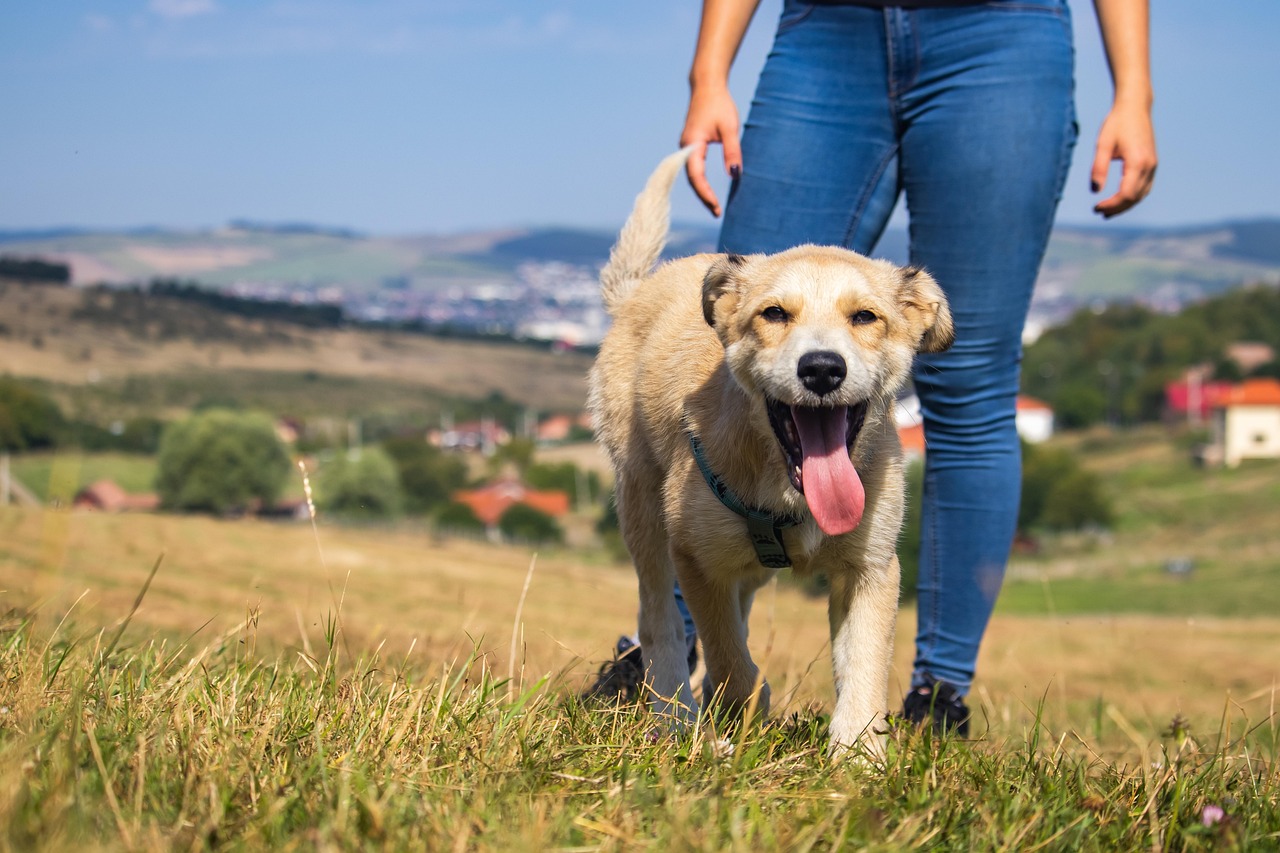Effective Techniques for Training Your Canine Companion
1. Introduction to Dog Training
Training a dog is an essential part of pet ownership. At its core, dog training encompasses communication between you and your pet to foster obedience and good behavior. Crucially, it curtails any potential behavioral issues. Diverse techniques, explored in-depth in this article, offer personalized methods for every pet’s needs

1.1 Definition of Dog Training
Dog training refers to a systematic application of behavior analysis principles to understand and influence dogs’ behavior. The objective of dog training is to foster adaptive behaviors and suppress potentially harmful ones. Techniques can range from basic commands like “sit” or “stay”, to more complex behaviors like detecting illegal substances. The training approach largely depends on the dog’s personality, breed, and specific needs. Understanding dog training can greatly promote pet-owner relationships by ensuring a harmonious coexistence.
1.2 Importance of Dog Training
Dog training is paramount for several reasons. It shapes behavior, curbs aggression, and nurtures obedient and happier pets. Training strengthens the bond between owners and their pets, fostering mutual respect and understanding. Moreover, a well-trained dog is easier to manage and less likely to cause public disturbances. In an emergency, training can prove vital for the dog’s safety. In essence, dog training is not merely about commands and tricks; it plays a crucial role in your dog’s overall development, behavior, and well-being.
1.3 Brief Overview of Different Training Techniques
Dog training encompasses various techniques, each suiting different needs and temperaments. The ‘Positive Reinforcement’ method leverages treats and praise. ‘Clicker Training’ employs sharp, distinct sounds for communication. ‘Electronic Training’ involves electronic devices. ‘Alpha Dog’ method establishes the trainer’s dominance by emulating a wolf pack’s alpha behaviour. ‘Scientific Training’ uses a methodical approach based on behavioural psychology. Finally, ‘Mirror Training’ functions through the dog mimicking the trainer’s actions. By providing an overview, this piece aids in technique selection.
2. Understanding Your Dog
Understanding your dog’s behavior is a key aspect of successful canine training. Dogs communicate differently from humans—through body language, wagging tails, and vocalizations, they impart their feelings and needs. A knowledgeable owner recognizes these signals to mould appropriate responses. Remember, consistency in your signals fosters trust and helps your dog comprehend the desired actions. Mastering your dog’s language is a commitment. It involves learning, keen observation, commitment, and compassion, which over time, will improve your communication with your precious furry friend.
2.1 The Fundamental Role of Behavior in Dog Training
Understanding behavior in dogs is foundational in efficient training. A dog’s actions are driven by an innate pack mentality that responds well to consistent leadership. The connection between behavior and training rests in identifying behavioral cues and modifying them effectively. This involves offering rewards for good behavior and discouraging bad ones, fostering a positive reinforcement cycle. Understanding your dog’s behavior and appropriately reacting to it, thus, underpins successful dog training. Indeed, responsible pet ownership lies in this significant connection between behavior and training.
2.2 The Importance of Communication in Dog Training
The efficacy of dog training significantly depends on proper communication. Fluent interaction helps establish an understanding between the dog and trainer, fostering success in imparting desired behaviors. It enables positive reinforcement, playing a pivotal role in behavioral conditioning. Additionally, effective communication affords timely correction of undesirable actions, facilitating behavior modification. Therefore, mastering the art of communication in dog training can be instrumental in nurturing a well-behaving pet while enhancing its overall well-being and fostering a healthy pet-owner relationship.
2.3 Understanding Your Dog's Body Language
Interpreting canine body language is a key aspect of successful dog training. Understanding gestures, postures, and vocalizations aids in determining your dog’s emotional state and subsequent needs. By observing cues like tail wagging, ear position, and eye contact, you’ll be able to decipher happiness, fear, or aggression. Similarly, recognizing specific barks or whines elucidates their communication attempt. Enhancing your ability to understand these signals fosters a positive relationship, ultimately making both dog training and companionship significantly more rewarding.
3. Puppy Training
Puppy training forms the foundation for your dog’s future behavior and habits. Utilizing positive reinforcement techniques can make learning faster and more enjoyable for your puppy. Training should start as soon as possible. Basic commands like ‘sit’, ‘stay’ and ‘come’ are crucial and need early emphasis. Socialization with people and other animals is equally essential. Remember, consistency and patience are vital in this process. Puppy training, when properly handled, helps form a well-behaved, sociable, and obedient canine companion.
3.1 When to Start Training Your Puppy
The optimal time to start training your puppy falls between 7 and 8 weeks of age. During this period, puppies are incredibly receptive to learning. Simple commands like ‘sit’, ‘stay’, and ‘come’ can be effectively introduced. However, remember that successful training requires patience and consistency. Puppies have short attention spans so trainings should be kept short and fun. Gradually, as they grow, the complexity and length of the training sessions can be increased. Early training influences behavior and shapes a well-behaved dog.
3.2 Basic Obedience Commands for Puppies
Sit
Your first order of business is teaching your puppy to sit. In a calm, assertive voice, you instruct the word “sit”.
Stay
The next command is “stay”. You must patiently repeat until your furry ward understands that “stay” means not to move.
Come
The final basic command is “come”. Calling your puppy to return is crucial, especially in potentially unsafe environments. These are rudimentary commands that lay the foundation for your dog’s future obedience. Practice consistently for optimal results.
3.3 Toilet Training your Puppy
Toilet training your puppy is vital to maintaining hygiene and essential in establishing a routine. Start by observing signs of your puppy needing to eliminate, such as sniffing, circling, or restlessness. Establish a consistent outdoor schedule, and encourage your puppy after successful elimination. Accidents will happen – remain patient. Rewarding good behaviors and calmly correcting mistakes helps. Remember, consistency, patience, and positive reinforcement are the keys to successful puppy toilet training. With time and persistence, your puppy will learn this critical habit.
4. Training Adult Dogs
Training adult dogs requires patience and consistency. Unlike puppies, adult dogs have established behaviors which require more effort to override. Implementing reward-based training is effective, making it a positive experience for the dog. ### Tailoring Training Techniques Individualized training techniques are crucial as each dog varies in temperament and learning ability. ### Consistency is Key Inconsistent training confuses dogs. Maintain consistency in commands and rewards to enable faster learning. Remember, every dog can learn new commands, despite age, with proper training techniques and consistent effort.
##
4.1 The differences in training an adult dog compared to a puppy
Training an adult dog differs remarkably compared to the process with a puppy. Puppies are typically more malleable, absorbing training rules quickly. Yet, their short attention spans can prove challenging. Contrastingly, adult dogs may carry ingrained habits, making unlearning difficult but generally, they can focus better. Emphasizing positive reinforcement is crucial at all stages but demands varying approaches. Consequently, trainers need to customize strategies to suit the dog’s stage of development, patience levels, and learning capacity.
4.2 Behavioral Changes in Adult Dogs and Ways to Address Them
Adult dogs can undergo behavioral shifts due to health issues, emotional stress, or aging. Symptoms such as increased aggression, anxiety, or lethargy should not be ignored. Employ consistent positive reinforcement techniques, including treats and praises, to address negative behaviors. Moreover, consult a veterinarian to rule out possible health-related causes. Using professional dog training services or behavioral specialists may also be beneficial. Remember, understanding and patience are key to helping your adult dog navigate behavioral changes.
4.3 Techniques for Retraining an Adult Dog with Bad Habits
Retraining an adult dog with bad habits may seem challenging but is achievable with consistent, positive-reinforcement techniques. Begin by identifying the specific problem behavior. Then use targeted training like ‘Sit-Stay’ or ‘Leave it’ commands. Reward good behavior with treats or praise to motivate your dog. Patience, persistence, and consistency are crucial. Engage a professional trainer for complex behavioral issues. Remember, dogs are intelligent creatures; they can adapt and learn at any age. Over time, your persistent efforts will yield positive results.
5. Positive Reinforcement Training
Positive Reinforcement Training is a dog training technique that strengthens the bond between a dog and their owner through rewards. Provides a treat, toy, or praise when the dog performs a desirable behavior, such as sitting or staying. Positive reinforcement is proven to stimulate dogs mentally, improve their overall behavior, and encourage them to learn new commands more efficiently. By offering affection and incentives, this method can facilitate a better understanding between you and your pet, making training more enjoyable for both.
5.1 Understanding Positive Reinforcement Training
Positive Reinforcement Training involves rewarding animals for good behavior, encouraging them to repeat it. This technique centers on reinforcing a dog’s desirable actions with treats, praise, or petting. It’s a non-punitive method enhancing the animal-human bond. Misbehaviors are ignored or redirected, teaching the pet other acceptable actions. Gradually, they understand their good actions earn them rewards, stimulating voluntary compliance. This approach can efficiently manage behavior problems, shape character, improve obedience, and promote healthy socialization in animals.
5.2 Benefits of Positive Reinforcement Training
Positive reinforcement training nurtures a strong, trust-filled bond between owner and dog. This training method ensures dogs understand what is expected, enhancing communication. Utilizing rewards stimulates their natural desire to cooperate, increasing learning speed. It eliminates fear-related behaviours compared to punishment-based techniques, hence fostering a confident, happier dog. Moreover, it’s suitable for any breed and age—making it universally applicable. Interestingly, positive reinforcement also offers therapeutic benefits for previously abused or rescue dogs, facilitating trauma recovery. Ultimately, it creates a harmonious cohabitation environment.
5.3 Practicing Positive Reinforcement Training: Step by Step Techniques
Positive reinforcement training is a key technique in canine obedience. Firstly, identify a positive stimulus that your dog enjoys. Secondly, obedience is rewarded with the positive stimulus immediately after the desired behavior, reinforcing it. Periodic rewards increase the dog’s motivation to obey. Lapses in behavior are ignored, not punished, reinforcing only positive conduct. This technique promotes mutual respect and understanding between the handler and the dog, fostering a strong bond.
6. Dog Training Equipment
Dog training equipment is a critical part of successful canine guidance. Useful tools include clickers for clear communication, harnesses to prevent pulling, and muzzles for safety. Training leashes allow control while still giving freedom. Treat pouches keep rewards on-hand for immediate positive reinforcement. In addition, specialized toys can engage and help channel a dog’s energy constructively. Importantly, chosen equipment should be safe and comfortable for the dog. Understanding and effectively using these tools can significantly enhance the training process, promoting a well-behaved and contented pet.
6.1 The Role of Equipment in Dog Training
A crucial aspect of effective dog training involves appropriate equipment. Harnesses, leashes, and collars can help maintain control during training sessions. Meanwhile, toys, treats, and clickers establish positive reinforcement, molding desired behaviors. Further, crates and playpens create a safe, secure environment for the dog, fostering feelings of safety while correcting bad habits. Essentially, the right tools can significantly enhance the efficiency of training, making it a more rewarding process for both the dog and the trainer.
6.2 Types of Dog Training Equipment
Different equipment options are available for effectively training your dog. These include clickers for instant praise, leash and collar for regulating movement, training treats for motivation, and crates for establishing boundaries. Other equipment, such as anti-bark devices and invisible fences, aim to discourage certain behaviors. Dog training equipment varies based on the training methods employed, with more positive reinforcement tools being widely used and recommended. Each tool serves a unique purpose, making dog training more simple and productive.
6.3 Choosing Appropriate Training Tools and Equipment for Your Dog
Choosing appropriate training tools can significantly impact your dog’s learning process. Consider the dog’s breed, size, and training needs. Necessities like leashes and collars can be adjusted according to your canine’s comfort. Training devices like clickers work by implementing positive reinforcement, while tools like treat-dispensing toys can provide mental stimulation. Additionally, training pads may prove beneficial especially for puppies. Nonetheless, avoid tools promoting punishment as a teaching method, celebrating instead accomplishments with affection and treats.
7. Advanced Dog Training Techniques
Enhancing obedience through advanced dog training requires patience and consistency. Techniques include distraction-proofing and distance commands to ensure complete control over your pet. Training activities such as agility trials, advanced obedience, tracking, and scent work provide mental stimulation, reduce behavior issues, and encourage overall well-being. Experts also recommend clicker training to reinforce positive behavior. While these techniques require experience and dedication, the benefits go beyond a compliant companion to a deeper bond between you and your dog. Explore these methods to further enhance your pup’s capabilities.
7.1 Clicker Training
As a scientifically-backed method, clicker training is a positive reinforcement tool preferred by many dog trainers. Using a unique sound signal, it marks desirable behavior immediately, guiding dogs to associate reward with correct responses. This system eliminates confusion and speeds up learning. Clickers work due to canine’s acute hearing capabilities, connecting behaviors with auditory stimuli efficiently. Despite requiring consistency, it offers flexibility as any family member can use it. Indeed, it’s a subtle, fun, and encouraging technique to enhance your dog’s obedience skills.
7.2 Electronic Training
Electronic training encompasses techniques that leverage electronic devices to train dogs. This primarily includes remote-controlled collars which emit different signals, such as a slight static shock, sound, or vibration, to correct undesired behavior. Used responsibly, electronic training can provide precision and consistency. However, this method requires a clear understanding to avoid causing unnecessary trauma. Many professional trainers recommend combining electronic training with positive reinforcement for a comprehensive and humane approach. As the debate over the ethicality of electronic training continues, it’s crucial to employ this method thoughtfully and judiciously.
7.3 Agility Training
Agility training is a popular and multifaceted approach to dog training, enhancing a dog’s physical prowess and obedience. This form of training engages dogs mentally and physically through a variety of obstacle courses. Activities include but are not limited to traversing tunnels, jumps, weave poles, and balance beams. This energetic and engaging technique not only boosts your dog’s fitness but also reinforces obedience and improves dog-owner bonds. However, always consider safety precautions to minimize the risk of injuries during agility training sessions.
7.4 Remote Training
Remote dog training is a modern, effective approach to teaching your canine discipline and good manners. It utilizes technology such as remote collars and specific training apps. This enables trainers to modify behavior even from a distance. If used appropriately, remote training provides quicker responses, enhanced comprehension, and subsequently, a more harmonious coexistence between dog and owner.
Frequently Asked Questions
1. What are the basic dog training techniques?
There are several basic dog training techniques available, each serving a particular purpose. The most common methods are Positive Reinforcement (rewarding the dog for good behavior), Clicker Training (using a device to signal the dog when it performs correctly), and Model-Rival Training (using another dog to demonstrate desired behavior). Other techniques include Relationship-based Training (building a mutual trust and respect) and Alpha Dog or Dominance theory (establishing the owner’s role as the pack leader).
2. Is using rewards an effective dog training technique?
Yes, using rewards is a highly effective dog training technique. This method, known as Positive Reinforcement, involves rewarding your dog for good behavior. This can be a treat, a toy, or praise. The idea is to encourage your dog to repeat those actions that earn rewards. Over time, your dog will learn to associate good behavior with positive outcomes, hence becoming more obedient.
3. How long does it take to train a dog?
The duration of dog training depends on several factors including the breed, age, and personality of the dog, the training method used, and the consistency of training. On average, basic obedience training can take a few weeks to a few months. However, it’s important to note that training is an ongoing process and should continue throughout the dog’s life to ensure good behavior.
4. Is it better to train a dog using professional help or can I do it by myself?
Both options have their advantages. Professional dog trainers have the experience and knowledge to effectively train your dog, they can also spot and correct any behavioral issues. However, training a dog by yourself can strengthen the bond between you and your pet and can be a rewarding experience. If you choose to train your dog on your own, it’s recommended to educate yourself on the best training techniques and seek professional advice if needed.
5. What should I do if my dog is not responding to training?
If your dog is not responding to training, it may be due to several reasons. The dog may be confused about what is expected, the training method may not be effective, or there might be medical issues affecting the dog’s ability to learn. It’s crucial to be patient and consistent in your training. If you’re having trouble, consider seeking advice from a professional dog trainer or a veterinary behaviorist.
6. Does the breed of the dog affect the training process?
Yes, the breed of the dog can affect the training process. Different breeds have different temperaments, energy levels, and intelligence, all of which can influence their receptiveness to training. For example, Border Collies are known to be highly trainable due to their intelligence and eagerness to please, while Basset Hounds may require more patience due to their independent nature. However, it’s important to remember that each dog is an individual and there can be considerable variation within a breed.
7. Is there an ideal age to start training a dog?
Training can begin as soon as your dog is brought home, usually around 8 weeks of age. Starting early allows you to shape good behavior and prevent bad habits from developing. It’s also never too late to train a dog. Older dogs can learn new commands and improve their behavior, although it might take a bit more time and patience compared to a young puppy.
Conclusion
In conclusion, dog training techniques are essential for fostering a bond between the owner and the pet, ensuring the dog’s safety, and maintaining a harmonious environment at home. The various methods discussed, such as positive reinforcement, clicker training, and mirror training, each have their own unique benefits and can be tailored to the individual needs of the dog. Consistency, patience, and positivity are key to successful training, and it is important to remember that each dog learns at their own pace.
Ultimately, the best training technique depends on the temperament, age, breed, and individual personality of the dog, as well as the owner’s commitment to the training process. Understanding these factors and choosing the right method will lead to a well-behaved, confident, and happy dog. Regardless of the method used, the goal is to enhance the bond between the dog and the owner, making the experience enjoyable and rewarding for both parties.



